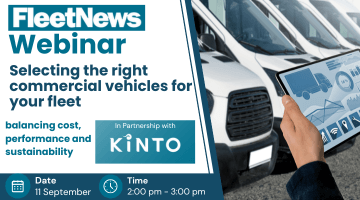By Karl Howkins, managing director of FlexAuto
In today’s fast-moving fleet world, data and technology collaboration are more important than ever.
If fleet managers and their leasing company partners can build closer relationships and share more data in real-time, it will drive out cost through greater operational efficiency.
Fleet managers already collect a significant amount of data from their vehicles. With the help of telematics, they can track the location of their vehicles, monitor driving behaviour, measure fuel consumption, and even detect if the engine is running when the vehicle is stationary.
All this information is useful on its own, but it becomes even more powerful when it is shared with leasing companies.
When both sides are viewing the same real-time data, they can quickly identify and address problems before they become costly.
It could be something simple, like a driver idling too long or taking an inefficient route.
Alternatively, it could also be more serious, like spotting signs of engine trouble early.
Another significant benefit of sharing data is that it facilitates effective maintenance planning.
Instead of waiting for something to break, sensors in the vehicle can warn managers when something is starting to go wrong. This means repairs can be done early, saving money and avoiding breakdowns.
When leasing companies can access this data as well, they can collaborate with the fleet manager to schedule service in a way that keeps vehicles on the road for as long as possible.
They can also make smarter choices about when to replace a vehicle, based on its service history and the running costs.
Greater transparency and collaboration improve the performance of leasing companies themselves.
Deeper insights into how vehicles are used and maintained allow services to be tailored more closely to the real needs of their clients. For example, they may introduce more flexible leasing terms or support packages that reflect actual usage patterns.
It creates a more personalised and cost-effective service, which benefits the fleet operator and helps the leasing partner stay competitive in a changing market.
The way drivers behave also plays a big part in running costs.
Speeding, hard braking, and sudden acceleration all wear out parts faster and use more fuel.
By keeping track of these habits, fleet managers can coach drivers to drive more smoothly and safely.
If leasing partners have access to the same data, they can help identify patterns across multiple fleets and offer additional support or training.
Better driving also means fewer accidents and lower insurance costs.
Fuel is one of the biggest expenses for any fleet. By closely tracking fuel use, managers can identify any unusual occurrences.
A vehicle using more fuel than expected might have a mechanical issue or might be driven in a way that wastes fuel.
Fuel card programmes and detailed reports help managers see the full picture, making it easier to make changes that save money.
When leasing partners can see the same numbers, they can recommend changes or even adjust contracts to match real use.
Choosing the right time to replace a vehicle is a tricky balance. Replace it too soon and you lose money. Wait too long and you spend more on repairs and lose value.
When all the data is shared in one place, it is easier to see when a vehicle is becoming too expensive to keep.
It can help managers make better decisions about when to sell or replace, and leasing companies can use that data to offer more informed advice and improved options.
Meeting rules and safety standards is another challenge. Fleets must comply with various regulations, ranging from the maximum driving time allowed for a driver to the amount of pollution a vehicle emits.
Missing something can lead to fines or legal trouble. By tracking all of this automatically and sharing the data, fleets can stay ahead of problems.
Leasing companies can incorporate these tools into their services, making it easier for fleets to stay compliant with the rules.
When fleet managers and leasing companies work closely together and share their knowledge, both sides benefit. The fleet runs more efficiently, costs decrease, and there are fewer surprises.
Decisions can be based on real facts, not guesses. Problems can be spotted early and fixed quickly. Vehicles are used in smarter ways and drivers are safer.
This kind of teamwork is not just about technology. It's about trust, shared goals, and being transparent with information.
As fleets face rising costs and tighter regulations, those that build strong partnerships and utilise their data wisely will have the best chance to succeed.
The road ahead will be shaped by those who choose to work together.
























Login to comment
Comments
No comments have been made yet.